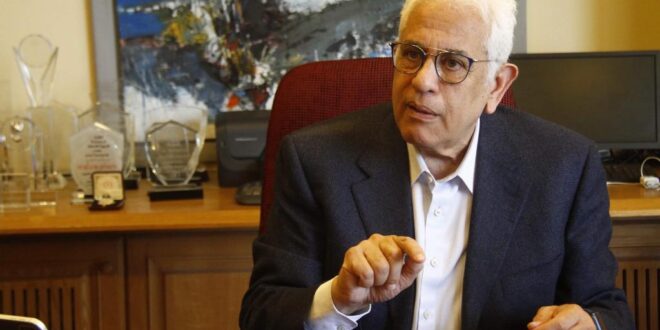Trump’s retreat from the plan to forcibly displace Gaza residents to voluntary displacement is merely a superficial change. The approach has shifted from a powerless Palestinian state to no state and no rights for Palestinians.
Tuesday, March 18, 2025 – 2:46 PM
During my visit with the Round Table delegation to Washington as part of a civil society initiative supporting Egypt’s leadership regarding Gaza and the two-state solution, my mind reflected on several missed opportunities for the Palestinian people over the past five decades.
First: The Camp David Accords (1978)
The Camp David Accords, signed in 1978 between Egypt and Israel, addressed the Palestinian issue through a document titled “Framework for Peace in the Middle East.” This document proposed granting Palestinians in the West Bank and Gaza Strip temporary autonomy for five years, during which negotiations on the final status of these territories would occur.
Key points regarding the Palestinian state in the document included:
- Autonomy: Establishing an elected self-governing authority in the West Bank and Gaza to manage local Palestinian affairs during the transitional period.
- Israeli Withdrawal: Israeli forces would withdraw from specific areas to allow the self-governing authority to assume its duties.
- Final Status Negotiations: Israel, Egypt, Jordan, and Palestinian representatives would negotiate the final status of the West Bank and Gaza within three years of the autonomy period’s start.
Notably, the document did not explicitly call for an independent Palestinian state but instead focused on autonomy arrangements and future negotiations. This approach faced criticism from some Arab and Palestinian parties, who felt it fell short of Palestinian aspirations for full independence.
The Palestinian Authority and Arab nations rejected this framework, signed by the United States and Israel. The Palestinians boycotted the conference held at the Mena House Hotel to activate the agreement, shunned Egypt, and the opportunity was lost.
Second: The Oslo Accords (1993)
The Oslo Accords, officially known as the “Declaration of Principles on Interim Self-Government Arrangements,” were signed on September 13, 1993, between the Palestine Liberation Organization (PLO) and Israel, witnessed by U.S. President Bill Clinton. These accords emerged from secret negotiations in Oslo, Norway, aiming to provide a framework for resolving the Palestinian-Israeli conflict.
Key terms of the agreement included:
- Mutual Recognition:
- The PLO recognized Israel’s right to exist in peace and security and committed to renouncing terrorism and violence.
- In return, Israel recognized the PLO as the legitimate representative of the Palestinian people.
- Interim Self-Government:
- Establishment of a Palestinian Authority to manage civil affairs in the West Bank and Gaza.
- Elections for a Palestinian Legislative Council to represent Palestinians in areas under the Authority’s control.
- Transitional Period and Final Status Talks:
- A five-year transitional period beginning with Israel’s withdrawal from Gaza and Jericho.
- Final status talks on key issues such as Jerusalem, refugees, settlements, security arrangements, and borders were to start before the third year of the transitional period.
- Security and Public Order:
- A Palestinian police force would maintain order in areas under the Authority’s control.
- Israel retained responsibility for defending against external threats and ensuring the security of Israelis.
Despite initial optimism, the agreement faced numerous challenges and obstacles that ultimately hindered lasting peace.
Third: Clinton’s Parameters (2000)
In December 2000, U.S. President Bill Clinton proposed the “Clinton Parameters” as a framework for a comprehensive solution to the Palestinian-Israeli conflict. The proposals aimed to address major issues, including:
- Territories and Borders:
- A Palestinian state would be established on 94-96% of the West Bank and all of Gaza.
- Israel would annex major settlement blocs housing about 80% of settlers, with land swaps compensating Palestinians for 1-3% of land.
- Geographic continuity for the Palestinian state was emphasized to minimize disruption to Palestinian communities.
- Jerusalem:
- Sovereignty would be divided based on demographics: Arab neighborhoods under Palestinian sovereignty and Jewish neighborhoods under Israeli sovereignty.
- The Al-Aqsa Mosque compound (Temple Mount) would be under Palestinian sovereignty with “symbolic ownership” for Israel, ensuring access for all worshippers.
- Refugees:
- No mass return of refugees to Israel; instead, limited return based on Israeli approval.
- Refugees would be settled in the Palestinian state, resettled in third countries, or compensated.
- Security:
- Israeli forces would withdraw from Palestinian territories within 36 months.
- Israeli presence in the Jordan Valley would continue in limited areas for an additional 36 months under international supervision.
- The Palestinian state would be demilitarized but maintain a strong security force for internal order.
While Israel accepted the proposals with reservations, Palestinian leader Yasser Arafat expressed significant concerns, particularly regarding Jerusalem’s division, refugee rights, and territorial continuity. Consequently, no final agreement was reached, marking another missed opportunity for peace.
Fourth: Trump’s Peace Plan (2020)
In January 2020, U.S. President Donald Trump unveiled his Middle East peace proposal, commonly referred to as the “Trump Peace Plan.” The plan proposed a conceptual map defining territorial boundaries between Israel and a future Palestinian state.
Key elements included:
- Israel’s Annexation: Israel would annex about 30% of the West Bank, including parts of the Jordan Valley and existing Israeli settlements.
- Palestinian State: A demilitarized Palestinian state would occupy the remaining 70% of the West Bank and Gaza, with additional land exchanges in the Negev Desert.
- Gaza-West Bank Connection: The two territories would be linked via a tunnel or elevated highway to ensure geographic continuity.
- Jerusalem: The city would remain Israel’s undivided capital, with a potential Palestinian capital in outlying areas of East Jerusalem such as Abu Dis.
The plan received mixed reactions; Israel largely welcomed it, while Palestinian leaders and many international observers criticized it as biased toward Israel and undermining the prospects of a viable Palestinian state.
In early 2025, during Trump’s second term, a new proposal emerged regarding Gaza. The plan suggested U.S. control over Gaza to redevelop the area and relocate Palestinian residents. This proposal faced widespread criticism from both Israeli and Arab communities, raising concerns about its feasibility and the risk of further instability.
Egypt and other Arab nations responded with alternative plans focused on Gaza’s reconstruction without displacing its residents, emphasizing the importance of preserving the Palestinian presence in their homeland.
These initiatives reflect the ongoing complexities and differing perspectives surrounding the Israeli-Palestinian conflict. Over time, as Arab negotiating power weakened and Palestinian leadership remained divided, the proposals on the negotiation table have increasingly reduced Palestinian rights and deepened the occupation.
Gradually, the Golan Heights vanished from Arab demands, and the two-state solution now seems distant. The outrageous proposal for the forced displacement of over two million Palestinians to Jordan or Egypt reflects this deterioration.
I see no pride in what Hamas did on October 7 while witnessing 2.3 million Palestinians displaced, Gaza destroyed, and 50,000 dead. Some celebrate an illusory victory, yet I believe this may have been Israel’s greatest achievement in its modern history.
I began to suspect that a significant part of the Palestinian tragedy stems from their leadership’s actions, equally damaging as Israel’s crimes.
In my recent political visit with a civil society delegation, I found the atmosphere in Washington heavily biased in favor of Israel, showing no regard for Palestinian rights.
Reflecting on history, I recalled what Europeans did to the indigenous populations of North and South America and Australia, eradicating entire peoples with no mercy or guilt.
I also remembered the enslavement of Africans and the centuries-long exploitation of the continent’s resources. It seems the cruelty of colonial powers continues, masked by appeals to justice and human rights.
Sadly, Palestine is yet another example of this recurring tragedy — a grim testament to humanity’s enduring struggle for power and wealth at the expense of justice and peace.
 Dr. Hossam Badrawi Official Website
Dr. Hossam Badrawi Official Website


